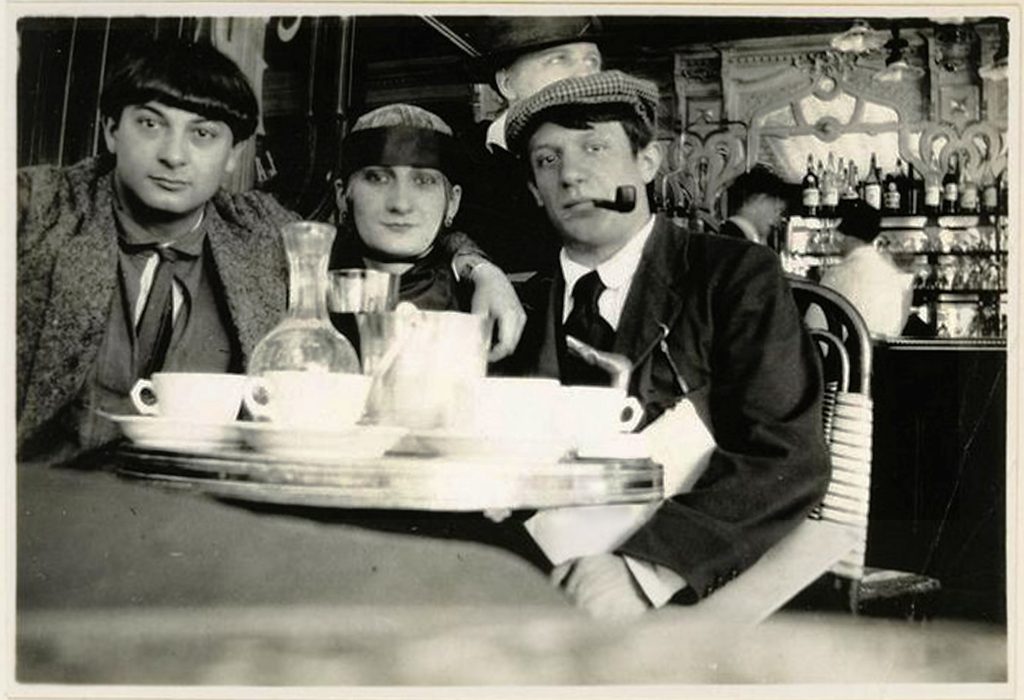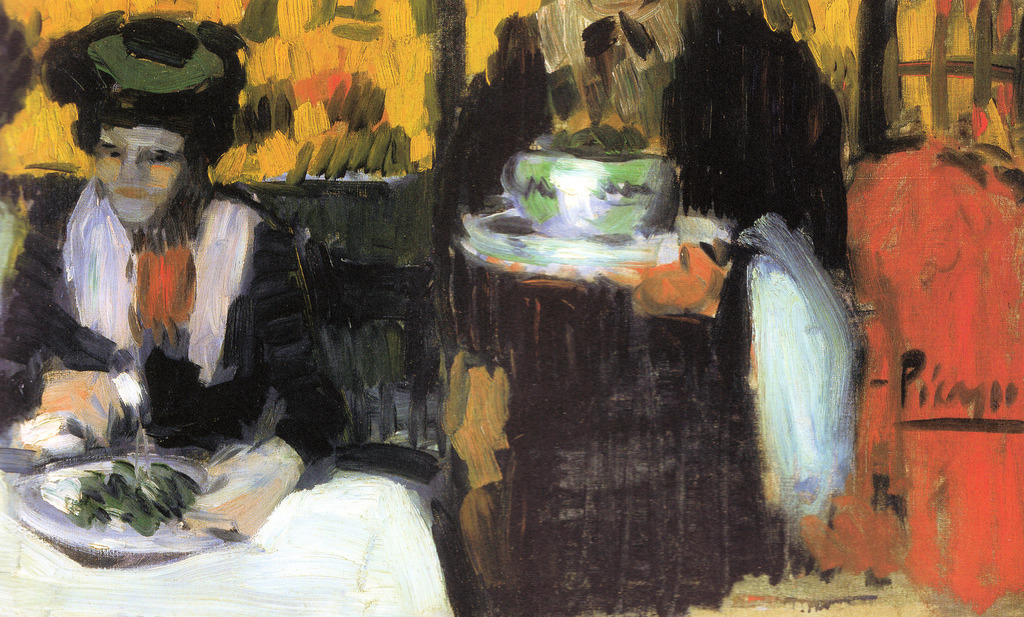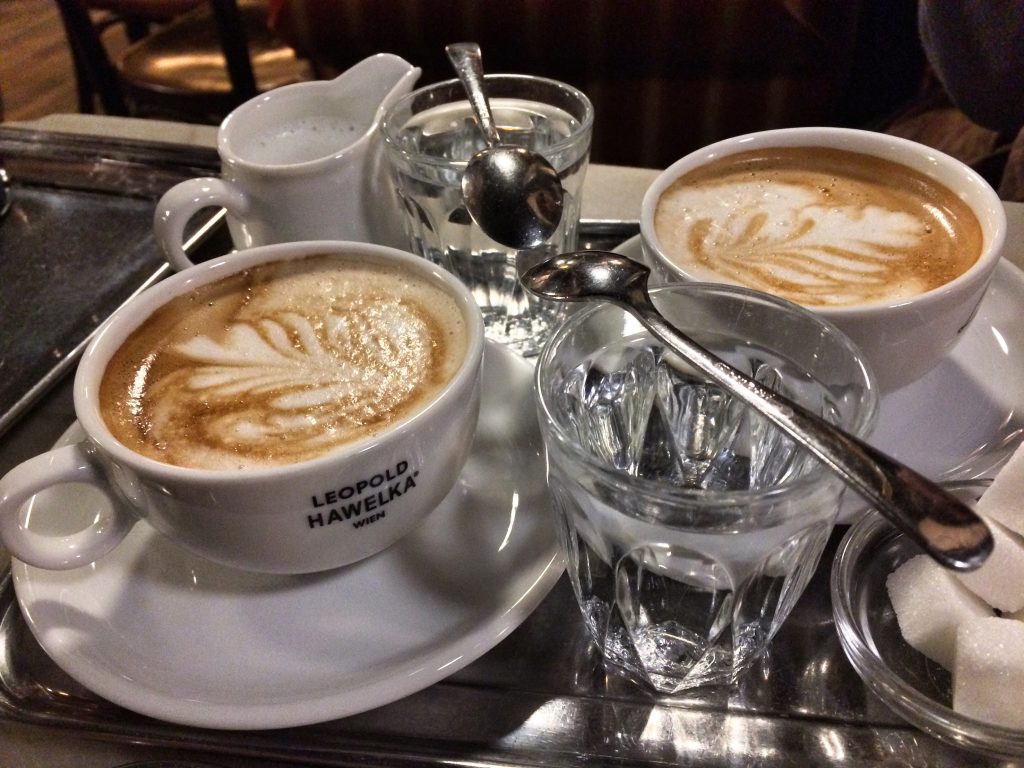Throughout history, the humble café, provider of hot coffee and sweet cakes, has disproportionately drawn artists, writers, and other intellectuals. How many of our greatest works of art and literature began as a doodle or hastily jotted lines in a coffee-stained notebook? How many revolutionary ideas began as caffeine fueled conversations? How many movements started with fists banging on tables full of crumbs? Perhaps you find these images more stereotypical than iconic.


The history speaks for itself, however. The Dada movement began at the Cabaret Voltaire in Zurich; fittingly, it ended at La Closerie des Lilas in an argument that would launch surrealism. These are not isolated examples: the Romantics left their crumbling manor houses to convene at the Antico Caffe Greco in Rome; the Lost Generation modernists nursed hangovers at La Rotonde in Paris, also a favorite of Pablo Picasso; the Beats opened the doors of perception at Vesuvio Cafe in San Francisco. In the early 20th century, you may have found anyone from Gustav Klimt to Sigmund Freud to Stefan Zweig to Vladimir Lenin at the famous coffee houses of Vienna. And in Oxford, cafes earned the nickname “penny universities” for the collection of intellectuals who would debate there. For the cost of a cup of coffee—and maybe a few late fees at the library—almost anyone could get the greatest education in the world. In fact, both The Lord of the Rings and The Chronicles of Narnia began at Eagle and Child, the Oxford café where J.R.R. Tolkien, C.S. Lewis, and others met to talk fantasy literature and philosophy.
History of Art at the Cafe
This historical role of the café in the arts makes sense. If great art and literature reveals truths about humanity, cafes provided an ideal space to observe—the assortment of patrons, staff, owners, and pedestrians from all walks of life. Honore de Balzac drew inspiration for his sprawling series of stories La Comédie humaine (The Human Comedy) from a seat at the café. Then there’s the added stimulation from warm caffeinated beverages, especially in colder climates, which most artists and students pulling all nighters depend on to spark creativity. Again, look to our friend Balzac, who reportedly had such a crushing caffeine addiction he ordered a sludge-like concoction of coffee grinds to get a quicker fix. The semi-public space of the typical café also provided an ideal meeting space: pleasant conversations, impassioned debates, and random encounters in equal measure. All for the relatively low price of a cup of coffee.
However, today it seems like the café no longer serves as a crossroads for artistic and literary movements. There are several reasons for this. The first, and perhaps most obvious, is Starbucks. Ironically, a coffee shop with a literary name from a city with a lively arts scene now stands in the way of great art and literature. By homogenizing and commodifying the café, the ubiquitous chain traded in the unique cultural experience for convenience. Then there’s the cultural drive towards efficiency. Writers may go to a Starbucks but more frequently as a workspace than a locale to nurture ideas. Or just take your coffee and go, aided by the rise of drive through coffee stations. Worst of all? Starbucks and its imitators, fast food places like Dunkin’ Donuts and McDonalds, and convenience stores like 7-11 may offer the only affordable cups of coffee in town anymore.
Art, Coffee… or Both?
Of course, most cities have independent chains and quasi-independent chains like Intelligentsia. At the places, the culinary arts, including the brewing of coffee, are now high art in their own right. Ironically, this may prevent struggling artists from enjoying their offerings. A slow-drip coffee and croissant at these types of places can add up to almost $20 after tax, tip, and inflation. Not to mention the fact that this new breed of gastronomic café, along with the historic coffee houses of arts and literature, now draw more social media influencers and like hunters than actual culture creators.

So where can artists gather? A few enterprising artists have opened cafes of their own to nurture a community atmosphere, such as Theaster Gates’s Peach’s in Chicago or the Zagreus Projekt in Berlin. Indeed, the Dada’s Cabaret Voltaire originated from this same impulse, as European artists and intellectuals displaced by war desired a space. Or perhaps the arts have moved to other spaces. Bars are the traditional yang to the café’s yin, offering a different type of experience. While music and other formats fare better in bars, the trick is to remember all the great ideas and conversations from an arts bender. Still, as with most things in the 21st century, there are simply more options than old fashioned cafes and bars: hybrid galleries, breweries, bookstores, and, of course, cyberspace. Or maybe it’s the converse of the historic formula. Instead of gathering in coffee shops, artists are more likely to work behind the counters there.
Image Credits
Cover Image by Pete Linforth from Pixabay
Hawelka Coffee by Johnny Saunderson. Licensed via Creative Commons.
